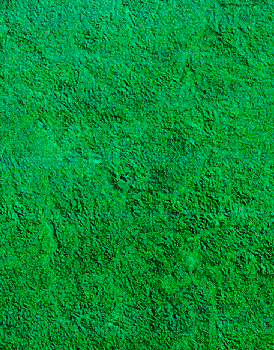Another Tunguska?
by Dennis Stacy
On June 30, 1908, something exploded above the Siberian taiga north of Lake Baikal, near the Tunguska (Stony) River, devastating some 2000 square kilometers of heavy forest in a single gigantic flash. Theories as to the origin of the so-called Tunguska Event have generated numerous articles and several books. They range from a large asteroid or comet, to a nuclear-fueled spaceship of extraterrestrial origin.
Now it appears something similar may have transpired in the equally sparsely populated Brazilian jungle in 1930, according to a recent article in the English science weekly, New Scientist (November 11, 1995, p. 12). [See also "Incident at Curucб," by Patrick Huyghe in The Sciences (March/April 1996, pp.14-17)] The Brazilian event was reported in some newspapers at the time, and was even investigated by a Catholic missionary, Father Fidele d'Alviano, who wrote a report for L'Osservatore Romano, the papal newspaper. But d'Alviano's account had largely disappeared from view. It was first cited in a 1931 paper by Leonid Kulik of the Soviet Academy of Sciences, who initially investigated the Tunguska explosion, and then again in a 1989 article in The Journal of the International Meteor Organization by scientists Nikolai Vasilyev and Gennadij Andreev, referencing Kulik's original citation.
British astronomer Mark Bailey, of the Armagh Observatory, backtracked the reference to d'Alviano's original article, aided by two local schoolboys, Damian Markham and James Scriven. Based on interviews with eyewitnesses, d'Alviano describes the event and its consequences--it happened at eight in the morning, August 13, 1930--in graphic style, but omits many key details that would aid astronomers in ascertaining origin. Hope is still held, though, as d'Alviano kept voluminous diaries, which the Vatican still possesses, and which Bailey wants to review.
Shortly before the explosion along its border with Peru in northwestern Brazil, says d'Alviano, the sun turned red and then the sky went totally dark, followed by a rain of white ash and an ear-piercing whistle. Then three fireballs streaked across the sky and exploded, their rumblings heard hundreds of kilometers around. Months later, some of the affected forest was still smoldering.
Bailey notes that three house-sized objects were probably involved, resulting in a combined one-megaton explosion, or about a tenth of the estimated energy released in the Tunguska Event. Whatever their cause у the Brazilian bombs occurred at the height of the annual Perseids meteor shower у such large scale invaders may be far more common than we previously suspected, says Bailey, when coupled in time with the earlier Tunguska explosion, perhaps ten times as common. "The Earth may be subjected to three or four [such events] a century," he warns.
As far as the twentieth century is concerned, then, that's two down and perhaps two to go, which could certainly make for some Millennium-ending or beginning fireworks. It seems patently unlikely anyone is aiming these things, but here's hoping, if they are, that they continue to target highly unpopulated areas as in the past. Otherwise, we'll all read about it--except those directly impacted.
[March 1999 Postscript: Click here for the fascinating abstracts from the 1998 Krasnoyarsk conference on the actual 1908 Tunguska event.]
